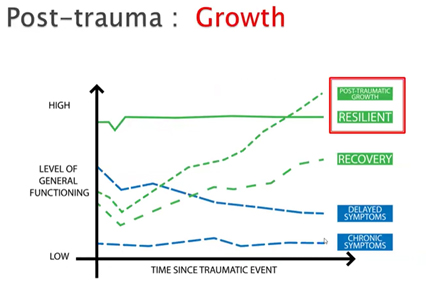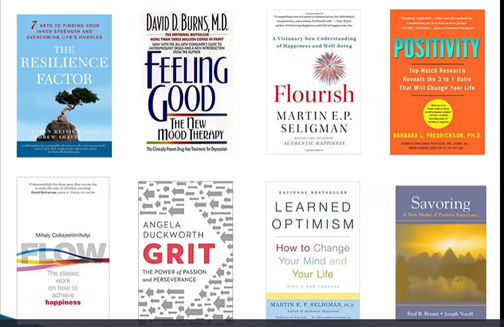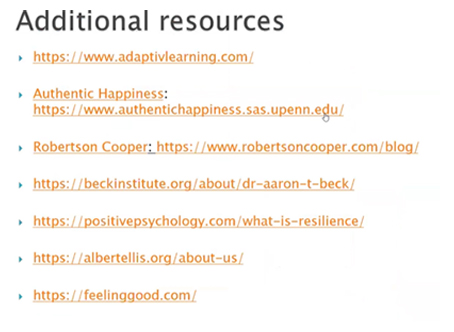Resilience skills An evening with Dr Swaminathan Mani
Introduction
On Friday, March 1, we had an insightful session on Resilience by Dr Swaminathan Mani, Vice President, Tech Mahindra.
Resilience has become an important theme particularly since 2020, when the pandemic broke out. Many of us suffered losses- deaths of close friends and relatives as well as jobs. We were not prepared and struggled to bounce back.
Setbacks are a part of life. All of us must develop resilience to cope with setbacks. Dr Mani explained how we can become resilient.
About Dr Swaminathan Mani
Dr Swaminathan Mani has over 30 years of experience – predominantly in the Indian IT (software) services sector. Currently, he is Vice president (Corporate Strategy and Marketing) for Tech Mahindra. His areas of expertise are overseeing technology analysts, guiding large deal advisors, nurturing alliances with partners, and providing comprehensive support in pursuit endeavours.
Dr Mani holds an Engineering degree from BITS Pilani, an MBA degree from NIT Trichy, a master’s degree in psychology from University of Madras, Master's degree in Sociology from IGNOU New Delhi, a Diploma in Counselling Psychology & Guidance from ANU, AP and a PG Certificate Program in Senior Management from IIM Nagpur.
Dr. Mani has earned two distinguished PhDs: one in Management (Renewable Energy) from the University of Petroleum & Energy Studies (UPES), Dehradun, and the other in Psychology from Lovely Professional University (LPU), Punjab.
Dr Mani has published several papers in international, peer-reviewed, Scopus indexed journals of repute and has been cited over 275 times. He has been awarded over 20 copyrights by the Registrar of copyrights, Government of India.
Dr Mani has been a reviewer for many international academic journals of leading publishers like Emerald. He is a member of the Board of advisors for Mody University (Rajasthan), Board of studies for NIT, Trichy, Jindal Global Business School (Haryana) and the curriculum review board of LPU (Punjab).
The inspiring story of Karoly Takacs
Dr Mani began with the inspiring story of Hungarian shooter, Karoly Takacs. Born in Budapest in 1910, Takacs joined the Hungarian army and excelled in pistol shooting. By 1936, he was a world-class competitor.
In 1938, Takacs lost his right (dominant) hand in a grenade blast. He had to give up his job in the army. His aspirations of representing Hungary at the Olympics were dashed. For a couple of years, none heard of him. But in 1941, he resurfaced when the trial for selection of athletes for the Olympics began. His friends were happy that he had come out of isolation. But they were surprised when they heard that Takacs was planning to compete in the trials. Takacs had secretly practiced shooting left-handed. His perseverance paid off, and he regained his competitive edge.

Takacs did well in the trials and was selected to represent Hungary. He went on to win the gold medals in the London (1948) and Helsinki (1952) Olympics in the 25-meter rapid-fire pistol event. He continued competing until 1956 and later became a successful coach.
Takacs’ story illustrates post traumatic growth. Some are completely shattered by a trauma, others recover but it is only a few like Takacs who go on to thrive even after a trauma. See graph.
What is resilience?
Resilience is the ability to bounce back from adversity. Resilience is also the ability to grow in the face of challenges by flexible adaptation to the changing demands of stressful experiences. Recovery is like going from red to amber. Growth is going from amber to green.
Core elements of resilience
According to Karen Reivich, there are eight dimensions of resilience, one inherent and seven which we can cultivate through practice.
Biology: Only about 30% are born resilient. But others too can learn resilience.
Self-awareness: This is the ability to notice our thoughts, emotions, and behaviours. It is also about knowing our strengths and weaknesses. This is a kind of metacognition, i.e. thinking about thinking.
Self-regulation: We must challenge negative self-talk. This is about toning down the self-critiquing that goes on in our minds all the time.
Mental agility: This involves developing multiple perspectives for optimal problem solving.
Self-efficacy: This is about our belief in our ability to solve the problem. We can acquire mastery through several small wins. Each win adds to our kitty.
Connections: Resonant connections make a big difference. We can connect with fellow human beings. We can also connect to something much bigger than us, like nature.
Positive institutions: Family, community, etc can boost resilience.
Optimism: There are two kinds of optimism.
- Dispositional: thinking about the future.
- Explanatory: interpreting what has already happened
The derailers Cognitive distortions: Thinking traps
According to Karen Reivich, there are eight dimensions of resilience, one inherent and seven which we can cultivate through practice.
Biology: Only about 30% are born resilient. But others too can learn resilience.
Self-awareness: This is the ability to notice our thoughts, emotions, and behaviours. It is also about knowing our strengths and weaknesses. This is a kind of metacognition, i.e. thinking about thinking.
Self-regulation: We must challenge negative self-talk. This is about toning down the self-critiquing that goes on in our minds all the time.
Mental agility: This involves developing multiple perspectives for optimal problem solving.
Self-efficacy: This is about our belief in our ability to solve the problem. We can acquire mastery through several small wins. Each win adds to our kitty.
Connections: Resonant connections make a big difference. We can connect with fellow human beings. We can also connect to something much bigger than us, like nature.
Positive institutions: Family, community, etc can boost resilience.
Optimism: There are two kinds of optimism.
- Dispositional: thinking about the future.
- Explanatory: interpreting what has already happened
The derailers
Cognitive distortions: Thinking traps
Mind reading: We assume we know what the other person is thinking and vice versa. But usually, these thoughts are negative.
Overgeneralization: One isolated bad event may occur. But we think everything will go wrong.
Selective abstraction: We look at only the negative aspects.
Personalization: We think we are solely responsible for what is happening to others.
Blaming: We blame the world for what is happening to us.
Helplessness: We feel that one negative event will affect other parts of our life.
All or nothing: We see things in black and white. For example, if we are not promoted or if we do not do well in an exam, we think we are worthless. We do not perceive shades of grey.
Catastrophizing: We think of worst-case scenarios and go on ruminating without acting. We overestimate the problem and underestimate the resources we are consuming while ruminating about the problem. We waste critical energy imagining worst case outcomes. We immerse ourselves in anxiety without taking purposeful action. This may manifest in the form of:
- Downward spiral: We think we may lose everything.
- Scattershot: We go all over the place without any coherence.
- Circling: We keep coming back to the same point.
The Solutions
What are the solutions available to us? We should recognize the stages through which we go.
A: Activating event of adversity. This is the trigger.
B: Beliefs about the event. We think our rights are being violated.
C: The emotional consequence: We respond to even small incidents with great anger.
D: Challenge irrational beliefs: We must disprove the thought with data.
E: We must replace the old belief with a new belief.

In addition to these beliefs, we also have iceberg beliefs. These beliefs are deep-seated, often unconscious, beliefs that can hold us back in life. They are called iceberg beliefs because, like icebergs, only a small part of the belief is visible above the surface (conscious mind). The major portion lies hidden beneath (subconscious mind). Iceberg beliefs include achievement, affiliation/acceptance and control/power.
Real time resilience
Evidence: We can use data to prove why that thought is not true. We should make the data vivid. Vividness matters. We should be able to say: "That is not true because it has not happened before."
Reframe: We should reframe the situation with a bout of optimism in the moment: "A better way to see this is..."
Plan: Instead of ruminating unnecessarily and imagining all possible negative scenarios, we could think more constructively and plan: "If X happens then I will do Y"
Solution: Optimism and positive emotions
We could do with optimism. As mentioned earlier, there are two kinds of optimism. Dispositional optimism is thinking about the future. Explanatory optimism is interpreting what has already happened. When something goes wrong, we should not take things personally. We should think it is specific rather than global and transient rather than permanent.
Solution: DOSE
We could do with a healthy dose of Dopamine, Oxytocin, Serotonin and Endorphin.
Dopamine makes us feel good. Inadequate Dopamine leads to low self-esteem, lack of motivation, procrastination, brain fog, mood swings, anxiety, low energy, hopelessness.
Oxytocin enables social recognition and bonding. Inadequate Oxytocin leads to stress, feeling of loneliness, lack of motivation, low energy, anxiety, poor relationship, disconnect, insomnia.
Serotonin controls our mood. Inadequate Serotonin leads to low self-esteem, too much sensitivity, panic attacks, mood swings, hopelessness, insomnia, OCD tendencies.
Endorphin acts as a pain reliever. Inadequate Endorphin leads to anxiety, depression, mood swings, aches and pains insomnia, impulsive behaviour.
Solution: Character strengths and relationships
We should leverage our strengths, i.e. what are we when we are at our very best.
Relationships are also important. Resonant relationships mean we are there for people when things are going right. We do not become cynical or jealous or indifferent.
Building resonant relationships
Our relationships are shaped by four kinds of behaviour:
Suppose our spouse tells us that she got a promotion. Here are four scenarios.
Active constructive: Joy multiplier
We could respond: "That's amazing news! I'm so happy for you. You've worked so hard for this, and it's fantastic to see it pay off.?"
Passive constructive: Conversation killer
We could respond in a distracted way without making eye contact: "Oh, cool." This shows minimal interest and doesn't encourage the spouse to elaborate, potentially shutting down the conversation.
Active destructive: Joy thief
We could respond: “Now you will have to work 15 hours a day. There will be little time left for you to enjoy yourself.”
Passive destructive: Conversation hijacker.
We could talk about something which happened to us and hijack the conversation.
Positive Emotional Attractor (PEA) and Negative Emotional Attractor (NEA)
The concepts of Positive Emotional Attractor (PEA) and Negative Emotional Attractor (NEA) were popularized by Richard Boyatzis, a psychologist well known for his work on emotional intelligence and leadership.
PEA refers to a state of emotional arousal characterized by positive emotions such as joy, hope, enthusiasm, and inspiration. In this state, people tend to be more open-minded, creative, and receptive to new ideas and perspectives. PEA is associated with feelings of connection, growth, and well-being.
NEA refers to a state of emotional arousal characterized by negative emotions such as fear, anger, anxiety, and frustration. In this state, people tend to be more closed-minded, defensive, and focused on self-preservation. NEA is associated with feelings of threat, stress, and constriction.
Effective leaders can recognize when their own or their team's emotions are shifting toward either end of the spectrum and employ strategies to cultivate PEA and mitigate NEA when necessary. In environments that promote positive emotions and psychological safety, team performance, creativity, and resilience are better.
PERMA Model
The PERMA model has been developed by psychologist Martin Seligman to understand and promote well-being. PERMA stands for the five key elements that contribute to a flourishing life:
Positive Emotion (P): This refers to positive feelings, such as joy, gratitude, contentment, and love. We should engage in activities we find enjoyable, spending time with loved ones, practicing gratitude exercises, or savouring positive experiences.
Engagement (E): This involves being fully absorbed and interested in an activity. It's that feeling of being "in the zone. " Time flies by, and we are completely focused and motivated.
Relationships (R): Strong and supportive relationships are essential for well-being. We should nurture connections with family, friends, romantic partners, and even colleagues.
Meaning (M): Having a sense of purpose contributes to well-being. This purpose can come from various sources, such as our work, hobbies, religious beliefs, or volunteering activities. Finding activities that connect to our values and contribute to something larger than ourselves can enhance meaning.
Accomplishment (A): Setting and achieving goals provides a sense of accomplishment and boosts confidence. We need not burn ourselves out, but rather set realistic goals and experience the satisfaction of completing them.
Concluding remarks
Resilience is the foundation for recovery and growth. Only 30% of the people are born resilient. Others can learn resilience. The benefits of resilience far exceed the efforts needed to build it. It is the single biggest factor in all around success. We should ensure we get our daily dose of DOSE.
Q&A
A few sectors like education and IT adjusted to the changed dispensation following the onset of Covid, by going online quickly. In education, ICFAI is a good example. In the IT industry, many were affected by the pandemic. Yet, not a day was lost as work moved online. At Tech Mahindra, many guesthouses were converted into hospitals and whatever possible was done to help the employees.
People friendly organizations foster resilience. One of the reasons for Byjus being in trouble today is that even as they have spent huge amounts of money promoting their brand, they have not taken care of people.
Contrast this with the IT Services company, Satyam, known for its employee friendly policies. The company got into big trouble in 2009. There were doubts among clients about the delivery. But the employees rose to the occasion. They worked hard to address customer concerns. If earlier, the delivery was good, it became outstanding during the crisis. The lesson is that if companies take care of people, they will pay back 10 times during adversity.
Small wins set in force motion a force multiplier. Professor Theresa Amabile of Harvard Business School (HBS) has explained the importance of small wins in boosting motivation, creativity, and overall well-being. It's the perception of progress in meaningful work that truly fuels motivation. Completing mundane or irrelevant tasks won't have the same positive impact.
Large, distant goals can feel overwhelming and demotivating. Achieving smaller, more manageable tasks provides a sense of accomplishment and fuels motivation. These wins create a positive feedback loop, encouraging further progress. By acknowledging progress, celebrating achievements (big or small), and assigning meaningful work, managers can significantly enhance employee motivation and performance.
A participant in the webinar shared a personal experience. A 75-year-old relative was rushed to the hospital after a stroke. The doctors felt that a surgery had to be performed immediately for the patient to have any hopes of survival. From then, things have improved. Thanks to the support of the family and the resonant connections, the patient has improved steadily and has recently opened his eyes. When we appreciate small achievements, such as lifting the hand or an eye movement and provide positive reinforcement, the patient gets a boost, and the recovery is much faster. (Recall the movie, Three Idiots.)
We have taken several initiatives to strengthen the economy. We have fired up our youth. We have embraced self-reliance or atmanirbharta. We are emphasising green energy. In short, we are doing many things to improve the resilience of the economy.


